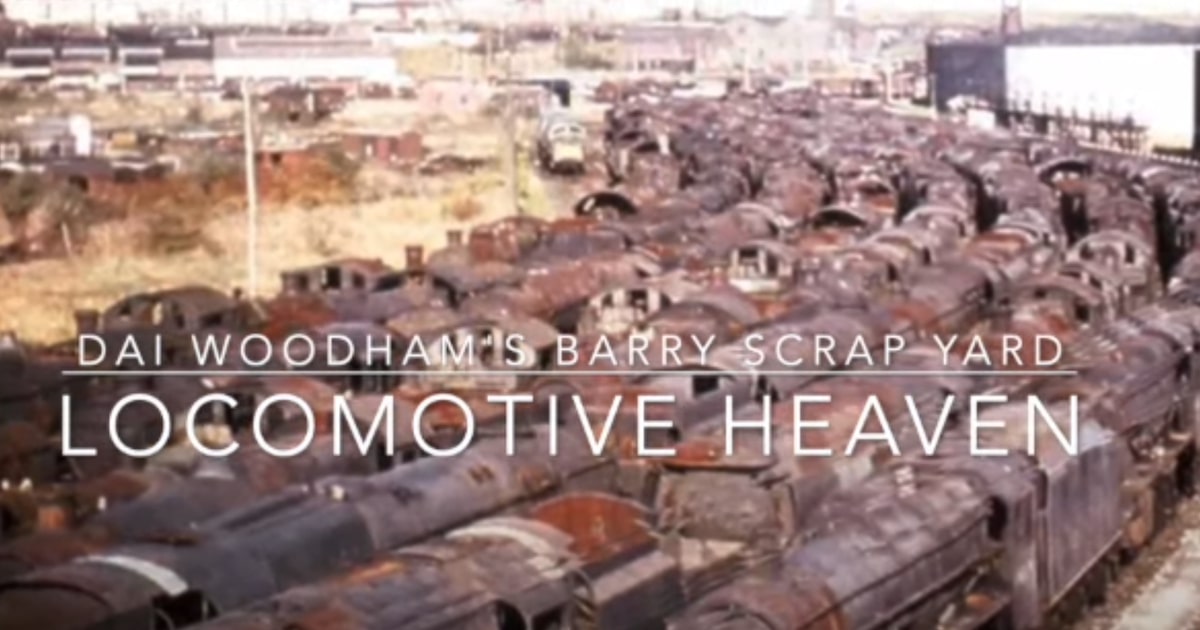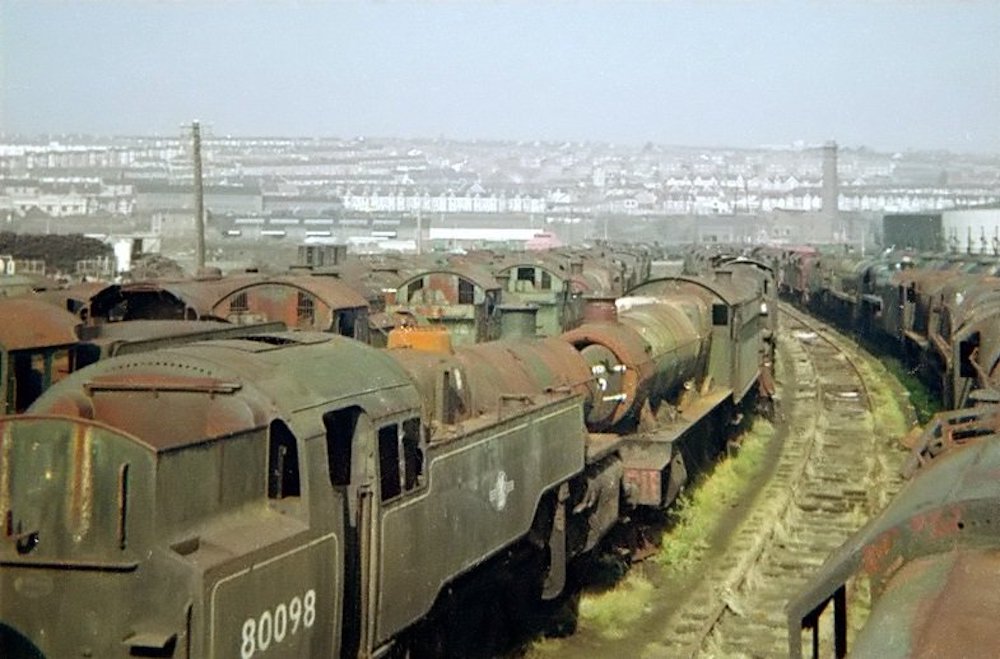Tales from Wales’ legendary ‘locomotives graveyard’

Graham Loveluck-Edwards
You often hear people (of a certain age) reminiscing about lost institutions they used to know and love.
Maybe it’s the chapel their nana used to go to that’s flats now. Or the local cinema that they used to queue up outside every Saturday that today is just a car park. However, it’s not very often that you find people waxing nostalgically about a scrap yard. But if you ask people who grew up in Barry in the 60s or 70s, very few will have nothing to say about Dai Woodham’s scrap yard. It used to occupy the old railway sidings next to the abandoned docks. It was a place that dominated the townscape. Even if you had no interest in it or what could be found there, it was difficult to ignore.
What made the place magical to so many and made it famous throughout the world was the mile after mile of decommissioned steam locomotives in various states of decay parked up there. As far as the eye could see. And even more magical if you were a curious little boy like I was the first time I visited Barry, you were allowed to climb up and play on them. Imagine what the Health & Safety bods would make of that today!
A good friend of mine suggested that I should make a programme about the yard and volunteered his expert knowledge. Great idea I thought, so I casually posted about the notion on social media, to see if I could flush out some personal recollections. I wasn’t really expecting much in the way of engagement.
How wrong could I have been. It seems that everyone has a story about Dai Woodham’s locomotive scrap yard.

I heard how children used to climb up the front of the first locomotive in a line, down the chimney into the boiler then through the cab and out the back, onto the front of the next one and so on, to see if they could clear the whole line without touching the ground. I heard how amateur film makers used to light fires next to the cabs and fan the flames so billows of smoke would swirl past them, so it looked on the film like they were driving a steam engine. Even if the one they were in didn’t even have any wheels.
Lots of people had stories about how pragmatic Dai was when it came to pricing. One person told me that he found a small green engine on the yard. He fell in love with it. But it was boxed in on all sides by far bigger locomotives, some of which were missing wheels. He asked Dai ‘how much?’ Dai looked at the engine, looked at the others around it and with an air of ambivalence said “£60 – if you can get it out”.
I also heard from the relatives of the great man himself and a lady who worked at the yard for most of her life. They told me about all the preservation societies who would come to the yard in their droves. Their mission? To buy locomotives to restore. Even the BBC TV’s kids programme Blue Peter came to buy one. And of course, the back story of the most famous locomotive of all – the Hogwarts Express. How the old GWR Haul Class 460 engine made its way from Barry Sidings to the silver screen.

When you think about it, nostalgia has always been the currency of Dai Woodham’s. People harking back to the golden age of steam are what kept the business viable for over 30 years. And now the yard is gone the institution itself is the stuff of relived memories.
Incidentally, I did make the programme. It will be broadcast on Bro Radio FM on Monday 25th September 2023 after the 7pm news. But if the date and transmitter range are a barrier to you enjoying it, it is also available to watch on my YouTube channel.
Support our Nation today
For the price of a cup of coffee a month you can help us create an independent, not-for-profit, national news service for the people of Wales, by the people of Wales.





That’s a nice little typo there – “Haul” class for Hall Class. The locos were named after the homes of the landed gentry rather than the job they were designed to do. Eleven of them have been preserved, all rescued from Barry.